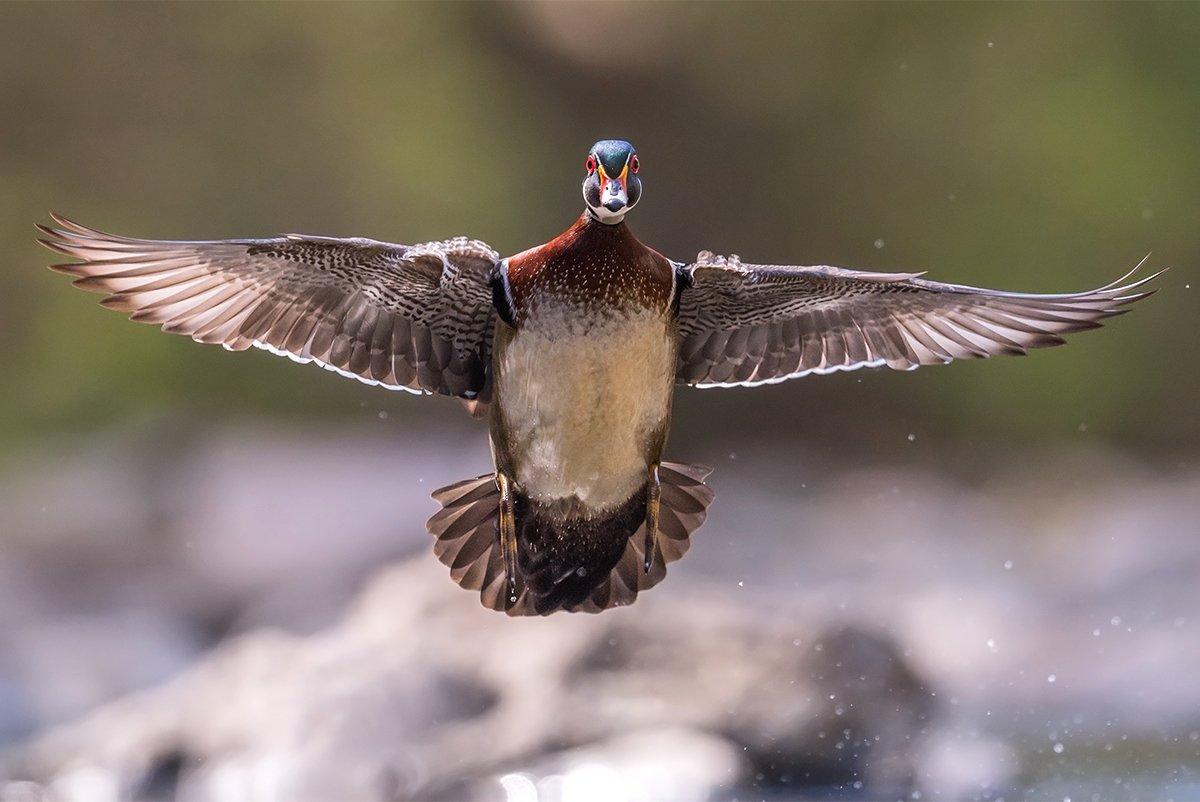Plumage, history and mystique make them tops in the USA
On this uniquely all-American day, I thought it would be cool to nominate an all-American duck. My pick? The wood duck.
Yeah, I know mallards are more plentiful and widespread. And it's true that wood ducks aren't unique to the United States, as many breed in Canada, and some winter in Mexico or other locales. But to me, Aix sponsa has the most American characteristics of any waterfowl.
Drakes wear their bright, iridescent plumage and crested heads like a proud flag-bearer in a July 4 parade. And hens, though much less colorful, also stand out, especially when uttering their distinctive hoo-eek, hoo-eek call when flushing.
Also, for many American waterfowlers — especially those east of the Mississippi River — wood ducks are a bread-and-butter bird, particularly early in the season. You'd be hard-pressed to find many wing-shooters who haven't enjoyed the lightning-fast action of woodies streaking through a timber-lined backwater or soaked up an autumn day of jump-shooting while drifting down a meandering stream. And I've never met anyone who didn't light up at the prospect of throwing fresh wood duck breasts on a hot grill.
Further, much like the young American nation defying the tyrannical British, woodies begin their lives with a test of courage. Young birds follow their mother and jump from elevated nests in trees or boxes to the ground below. And although many bounce or land awkwardly, they pass through that trial as proud survivors.
But for me, the wood duck's finest attribute lies in its history. In the early 20th century, woodie populations had declined severely, and the birds had disappeared from much of their original range because of habitat loss and overhunting for meat and feathers. The U.S. Migratory Bird Treaty Act started to turn things around, and thousands of organizations and individuals helped beginning in the 1930s by erecting artificial nesting boxes, also called wood duck houses. Wood duck numbers began to rebound, and nowadays, the colorful ducks are abundant throughout much of North America. That uniquely American tale — courting disaster, resolving to change and uniting to make it happen — epitomizes the wood duck's story and its appeal.
So while you enjoy fireworks and cookouts this Independence Day, tip your hat or raise a glass to the wood duck. Or, if you're really motivated, slip a skiff or canoe into a backwater to catch a few glimpses of our all-American duck. (Hey, you can barbecue any time, and opening day is only a few weeks away.)
Click here for more Realtree waterfowl hunting content. And check us out on Facebook.







